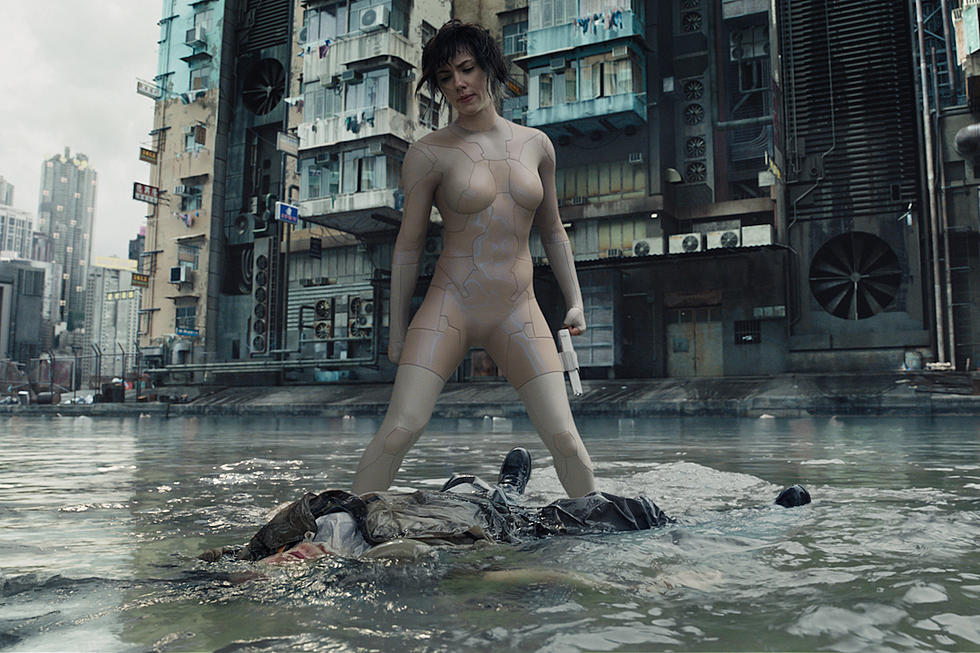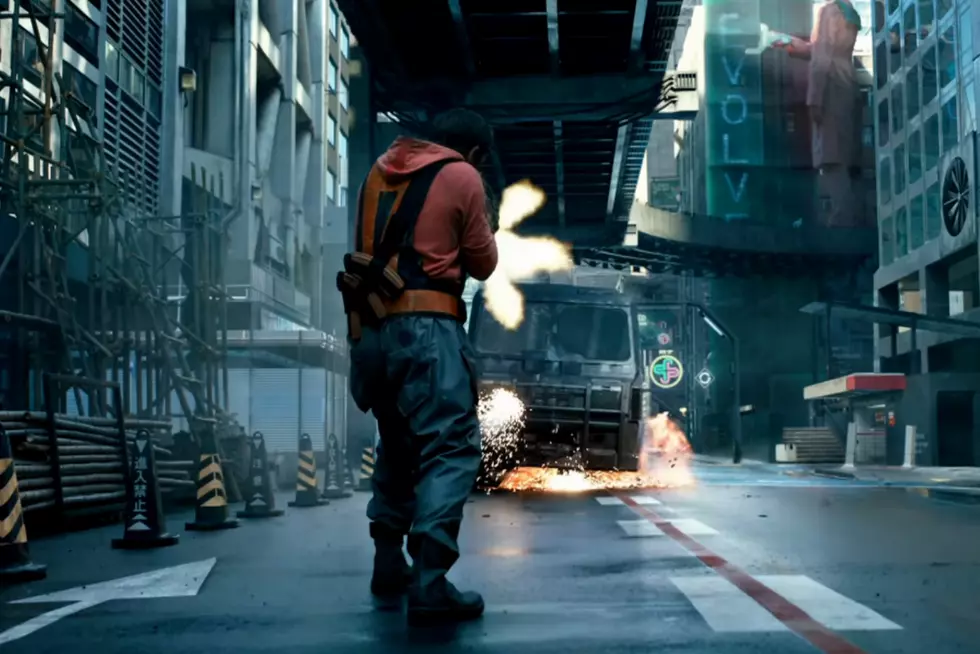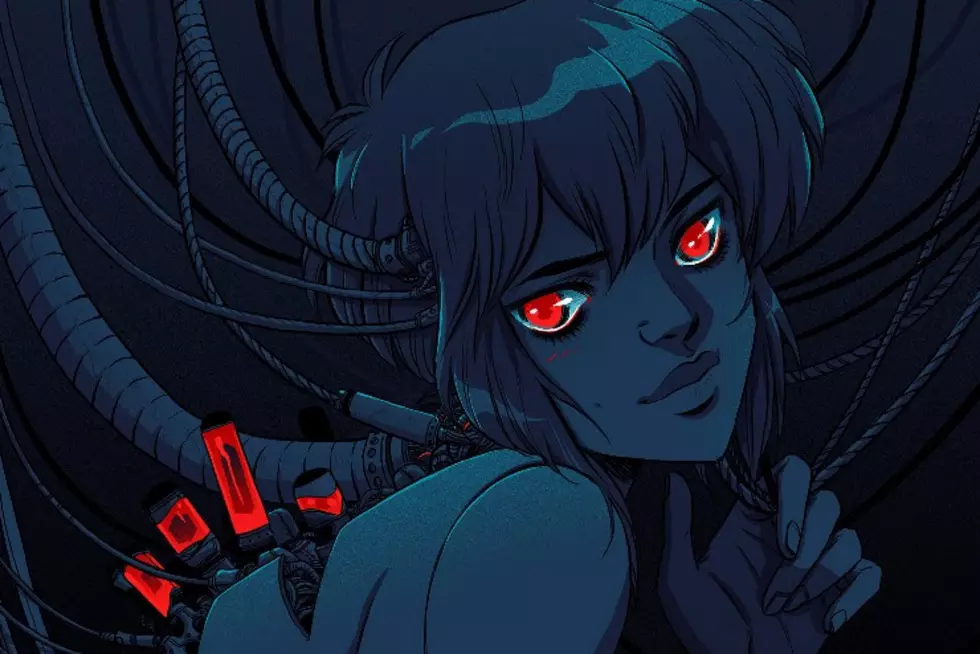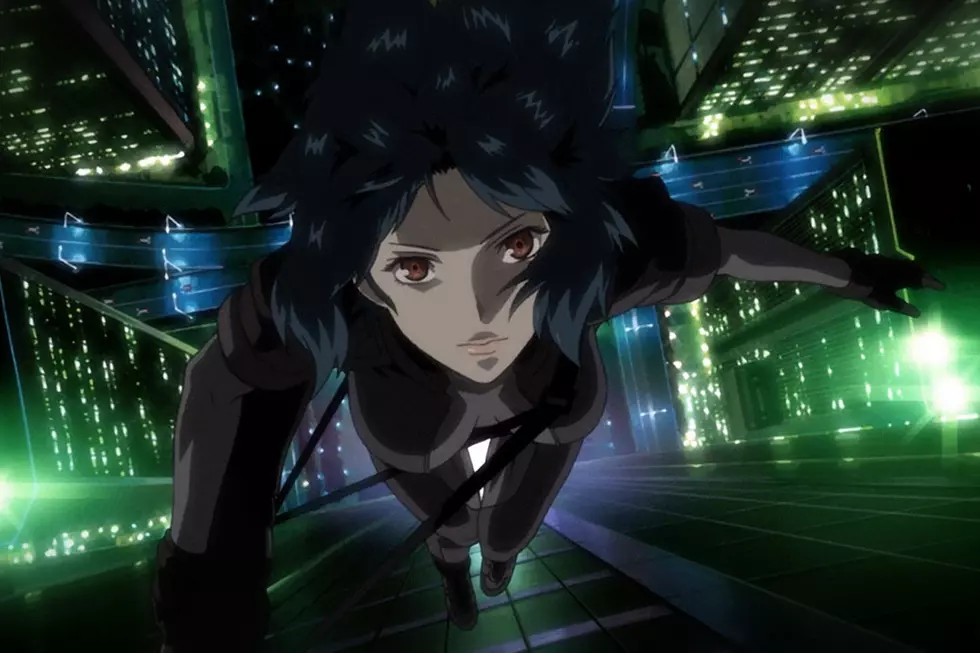
Screen & Page: Meet Anime’s Olivia Benson In ‘Ghost In The Shell: Stand Alone Complex’
Most anime is adapted from manga, often produced by the manga publisher to raise awareness and sell it overseas. But what about the anime shows or films that go the other way, adapted from the screen to the page? How do those works hold up, and what changes or stays the same? That’s what Screen & Page aims to explore.
This weekend the live-action Ghost In The Shell film starring Scarlett Johansson hits theatres. Early reviews haven't been kind, and the audacious whitewashing at the heart of it all irritates me so much that I don't plan to see it. Instead, I decided to dive into the West's favorite chapter in the long-running GiTS franchise: Ghost In The Shell: Stand Alone Complex!
THE ANIME
OK, so short history lesson here. In 1989, mangaka Masamune Shirow --- the pen name of Masanori Ota --- followed up the success of his earlier manga Black Magic and Appleseed with a dystopian cyberpunk work that many consider his magnum opus: Ghost In The Shell. With its striking artwork and complex themes layered beneath a lot of sex and violence, the manga was a huge hit, and spawned an even bigger franchise.
In 1995, Production I.G. (the people behind the Attack on Titan anime and Blood-C, among others) and director Mamoru Oshii made an anime film out of Ghost that set the world on fire with its pioneering mix of cel animation and CGI. (Legend has it that, when trying to explain their idea for The Matrix to producer Joel Silver, the Wachowski sisters showed him that movie and said, "We want to do that, but live-action.")
With additional manga sequels by Shirow proving to be a hit, in 2002 I.G. took the world of GiTS to TV with Ghost In The Shell: Stand Alone Complex. Directed and chiefly written by Kenji Kamiyama, with scripts by writers like Dai Sato and Junichi Fujisaku, input from Shirow, and animation by I.G., Stand Alone Complex ran for two seasons (the second one subtitled S.A.C. 2nd GIG) and a TV movie --- Stand Alone Complex: Stand Alone Society --- on the Japanese satellite channel SKY PerfecTV.
In the year 2030, after two more devastating world wars, technology has rapidly advanced to the point that most people are either partially or completely made up of cyborg prosthetics. In the fictional Japanese city of Niihama, or New Port City, a covert squad of ex-soldiers and cops named Public Security Section 9 deal with top-level cyber crimes, reporting directly to the Prime Minister.
The field leader of Section 9 is Major Motoko Kusanagi, a hard-as-nails cop dedicated to justice, and a cyborg in a completely prosthetic body. Being basically invulnerable prompts Kusanagi to take all manner of risks in the line of duty --- a source of aggravation to both her boss Chief Aramaki and her subordinates, specifically ex-army ranger Batou.
Kusanagi, Batou, and the other members of Section 9 --- including mulleted average guy Togusa, and information hunter Ishikawa --- are assisted in the field and in other matters by the franchise's de facto mascots, tachikomas. Basically, they're giant metal blue spiders with the armament and transport capabilities of a sniper tank. Also, they're hyper chatty and have intense, rambling conversations about the meaning of life. They are adorably dumb, and you will love them.
What makes Stand Alone Complex work is that it finds a perfect cover for its complex philosophy and transhumanist musings in the narrative trappings of a cop show. Episodes are divided into "stand alone" and "complex," indicated by a green or blue title card respectively. Most episodes are "stand alone," telling a tight futuristic cop story that has stunning action sequences or hidden emotional depths that are always captivating.
The "complex" episodes, dealing with recurring enemies like the hacker The Laughing Man, are fine enough, and are where all the series' solid world-building skills and well-realized plotting come together. But it's the "stand alone" episodes that serve as character spotlights --- and deal with Section 9 taking down threats like an anti-capitalist cyborg assassin who kills her targets with rolls of coins, or a pursuit of a self-aware, next-gen tank --- that are the most memorable.
Altogether, the two seasons and movie add up to an engrossing story with something for everyone --- and probably, with its familiar cop show structure, one of the most accessible anime ever made. Some elements may look a little dated --- particularly the all-CG opening sequence, which looks like a PS2 cutscene --- but overall, this show's look, feel, astonishing Yoko Kanno score, and solid dub acting from pros like Mary Elizabeth McGlynn and Richard Epcar, are engrossing and absorbing. Definitely worth your time.
THE MANGA
There are actually two manga based on Stand Alone Complex. The first, a comedy manga called Tachikomatic Days, written by Yoshiki Sakurai and drawn by Masayuki Yamamoto, is sadly not available outside of Japan. The second --- a straight adaptation of Complex by Yu Kinutani that ran in Weekly Young Magazine --- is available, and it's... okay.
What surprised me going into it was that, rather than consolidate the long-form story arcs from the show, Kinutani decided to spread out one stand-alone episode at a time, so that one episode is adapted per volume. It's a curious approach, but it mostly works.
In fact, Kinutani uses the stretched-out story to delve into backstories and elements the show couldn't address in a half-hour format, such as the origin of Fem --- the aforementioned cyborg assassin who kills people with coins. It adds more shading to an already well-constructed world.
That's all well and fine, but the main issue for me is in the art. In particular, the Major's face is far less stern and more... Barbie-ish. It's a weird shift that never quite reconciles with the rest of Kinutani's considerable talents.
Really, if you're hard up for more Complex after bingeing the show, this manga is worth seeking out. Otherwise, it's not really necessary.
Ghost In The Shell: Stand Alone Complex is streaming on Hulu and is available digitally, Blu-Ray and DVD. The manga is available in print from Kodansha Comics and your local library.
More From ComicsAlliance









